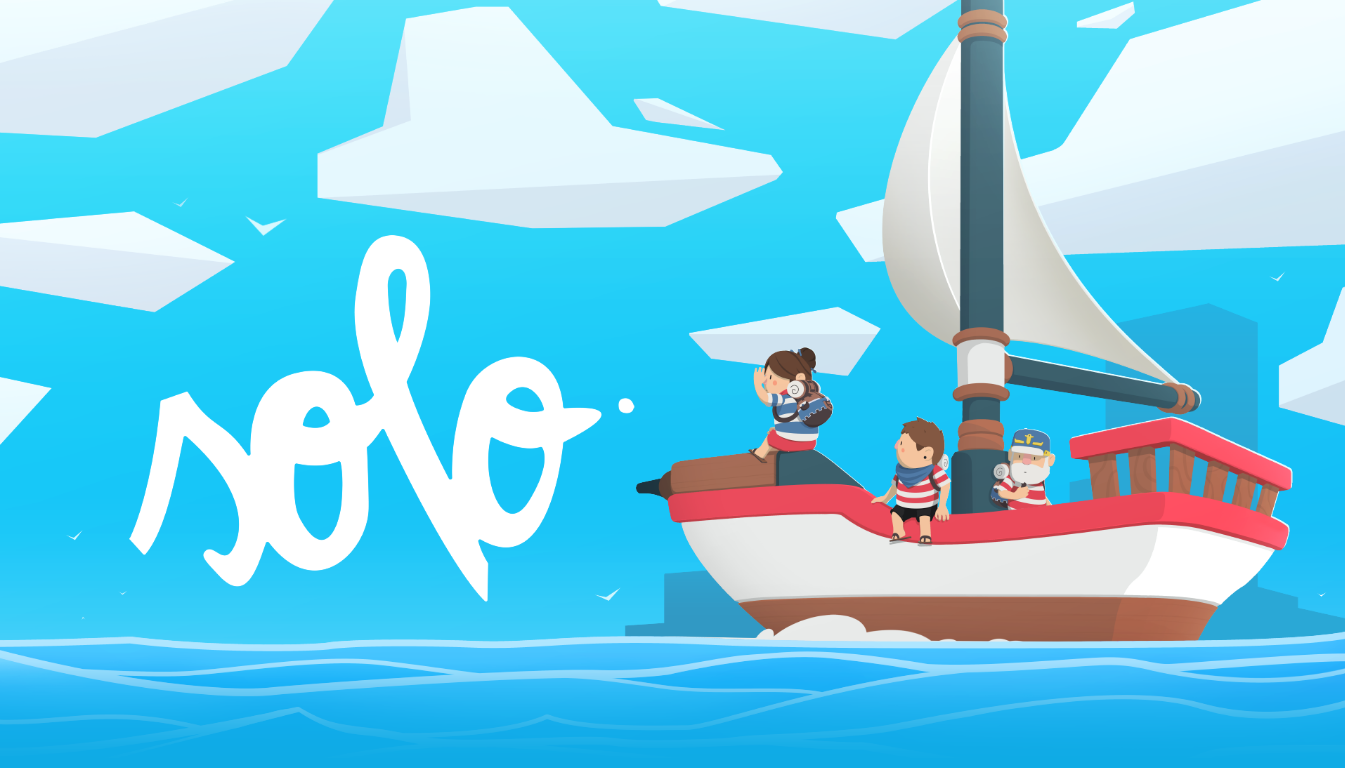No man is an island. So, take time out from your busy life to contemplate your thoughts in Solo. A game to ponder one’s innermost feelings..
Genre: Adventure, Puzzle
Developer: Team Gotham
Publisher: Team Gotham
Release Date: April 26th 2018


Solo is an introspective puzzler set on a gorgeous and surreal archipelago. Reflect on your loving relationships by exploring contemplative, dream-like islands.
Reflect on love’s place in your life with a personal and introspective branching narrative.
Combine blocks with different properties offering multiple solutions for most puzzles.
Contemplate and explore a living world: take photos of the charming, colorful islands amidst tranquil tunes or play the guitar for cute creatures.
Each island represents a unique puzzle the sailor will have to solve before getting to the Sleeping Totems and awakening them to answer a question about love and relationships.
Gameplay Video
Introduction
Solo is Team Gotham’s second outing. Their previous project was The Guest, a first-person exploration game. They are a Madrid based independent studio formed by five university mates. Funding for the title came by the way of Tim Schafer’s crowdfunding platform Fig. Which was in turn helped by donations from some big Industry heavy hitters such as Jonathan Blow (Braid, The Witness), Aaron Isaksen(Indie Fund) and John Graham (Humble Bundle). The development budget was reached back in early 2017. This enabled the team full creative freedom and resources to self-publish the title.
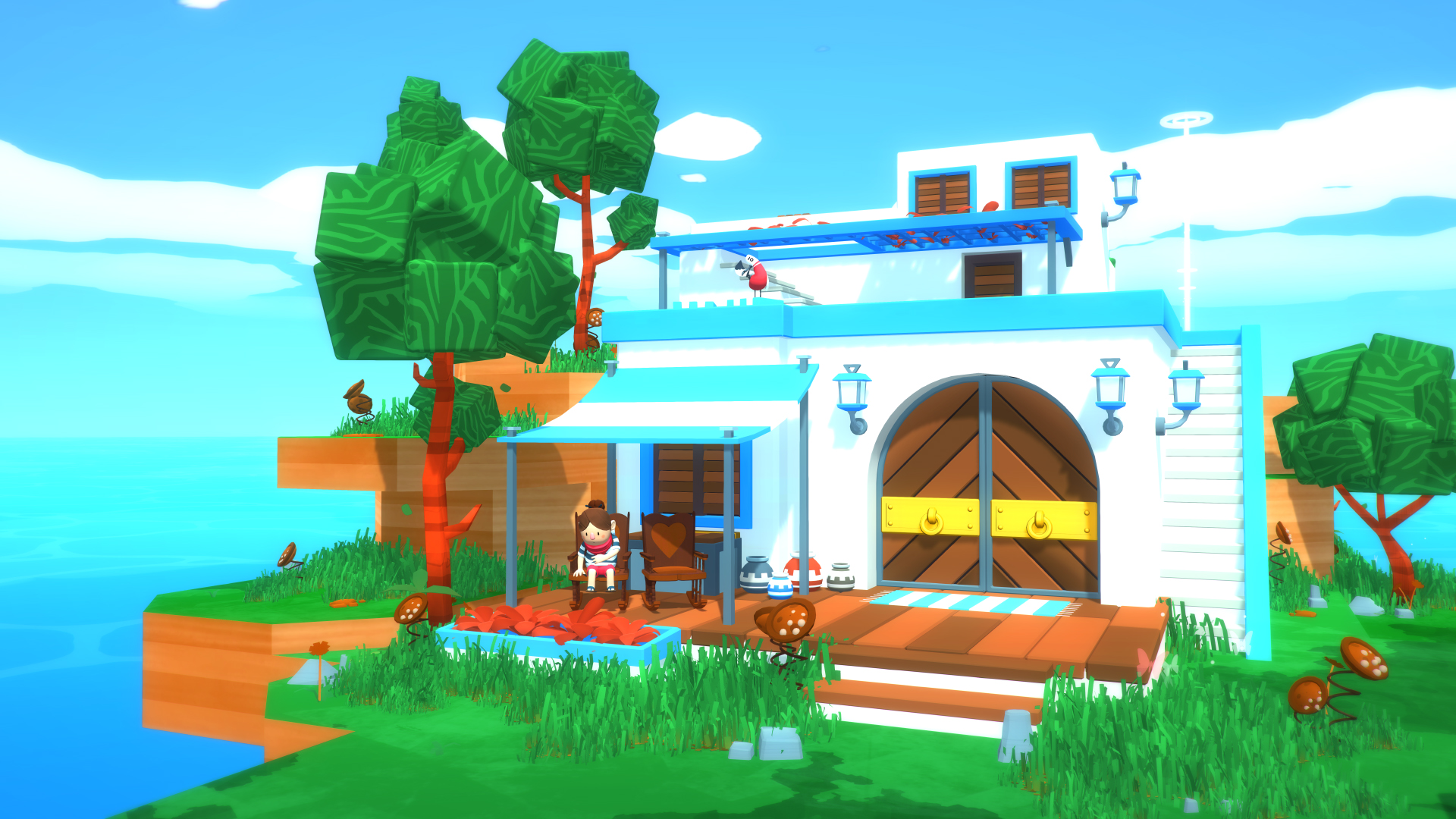
Gameplay
In Solo, you play the part of “The Sailor”, who is your avatar for all intensive purposes. You are tasked with solving 3D block puzzles set in a brightly colored world. At the start of the game, you are given the option to choose your gender and the basic appearance of your sailor character. I went with a white-bearded old chap who’s look ended like a cross between Captain Birdseye and the little scout from Pixar’s classic Up movie.
The game world is divided into archipelagos or tiny biomes, and each archipelago is formed by a small group of islands. Each island represents a unique block puzzle you have to solve before getting to the Sleeping Totems and awakening them. The basic gameplay system is based on the simple concept of using boxes, each with different properties and behaviors. You can combine them in clever ways in order to create a route to the top of tall islands where the dormant statues are placed. Fans of The original Core Design Tomb Raider series and 3D Zelda’s will feel instantly at home with this facet of gameplay and puzzle solving.
The learning curve to the whole experience is beautify implemented. The first couple of puzzles are a simple case of stacking blocks in order to reach higher ground. After a couple of islands, a magic staff is unlocked. This gives the player the ability to move and manipulate blocks out of arm’s reach. This feature greatly increases the complexity of puzzles using various lines of sight and swap mechanics. Logic also comes into play. Combining blocks of different properties at the right time and in the right order becomes paramount. A parachute is also unlocked after a few islands have been activated. This allows you to glide from one land mass to another.
Once you have woken the totem on an island, you have to answer some questions regarding your relationships and love life. These take the form of a multiple choice set of replies. The ghostly figure of your true love appears and helps you to activate the next puzzle by turning two ship wheels set on either side of the statue, this raises the next landmass for you to explore.
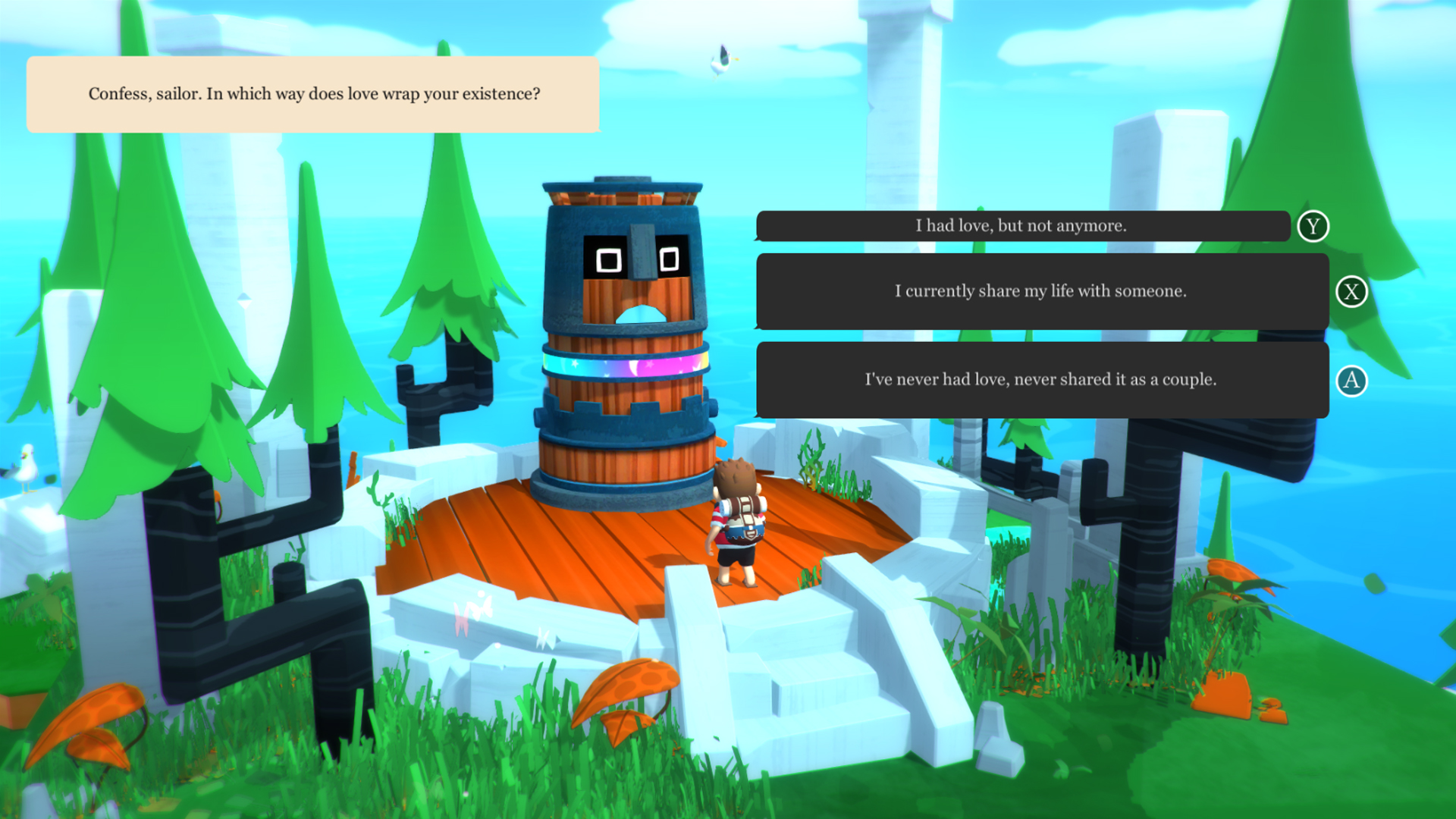
To mix up the gameplay there are a couple of sequences where you enter underground passages. These are connected by puzzle rooms with locked doors. In order to progress you have to solve shadow box logic conundrums. These are presented as a large chess board with a burnt in shadow etched onto the surface. The player has to match the shadow by manipulating the surrounding blocks placed around the room. I found these puzzles hugely engaging and a nice change of pace from the standard ones found on the surface.
Beyond the basic gameplay, you are free to take your time to explore the environment at your leisure. There are no time restraints and plenty of inbuilt activities. You can befriend and pet the local wildlife, and even play your guitar and take photographs. There are numerous park benches and swings on which to take a breather. These allow the player moments of contemplation and meditation. A cool feature is the ability to change the whole gameworld look by playing tunes on your guitar. These tune scores can be found by discovering letters, scattered around the islands. By playing chords in the right order you can make it rain or change the hue of the world around you. This is a neat touch and in combination with the photo mode adds a nice extra feature to the whole experience.
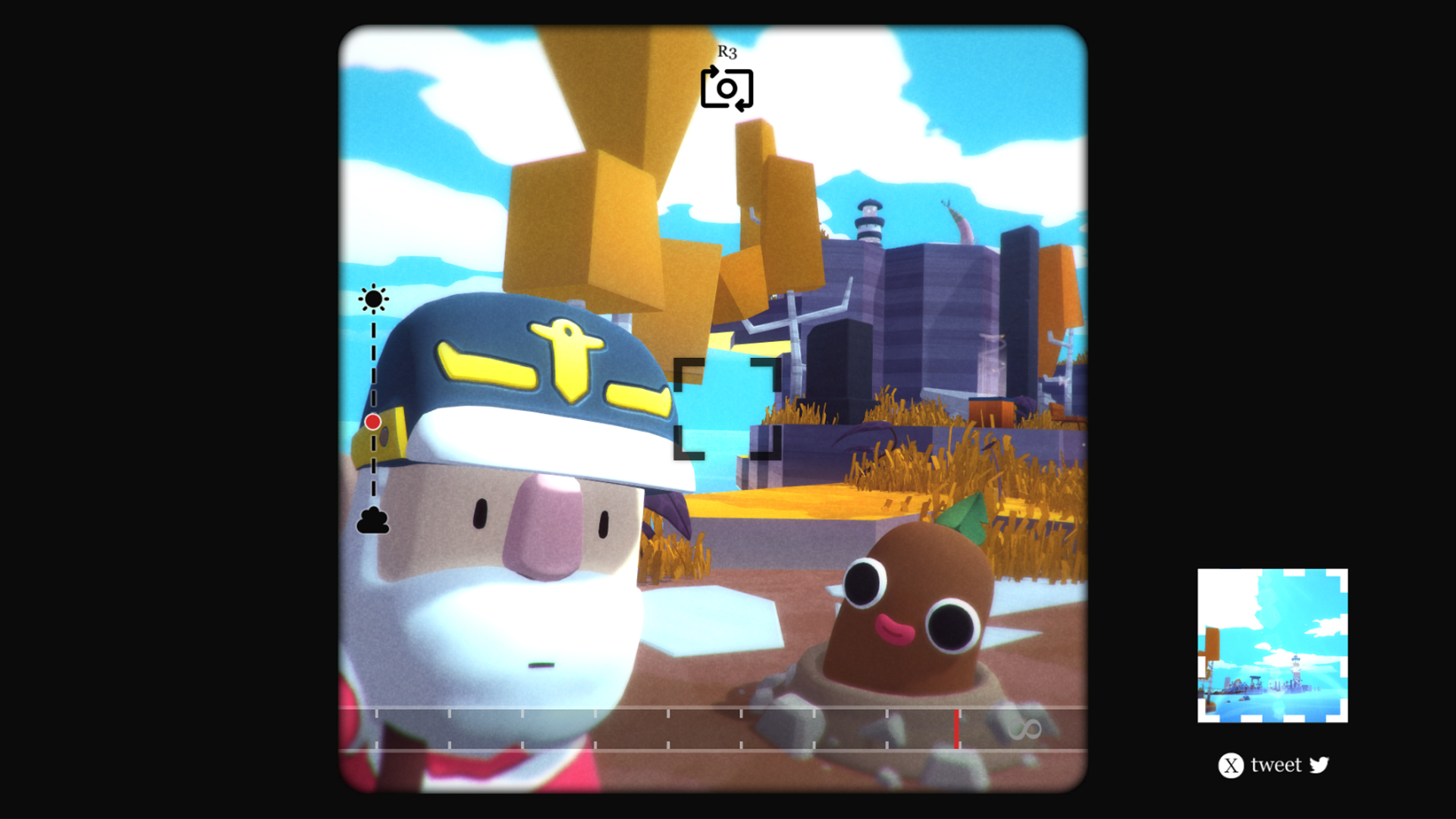
Graphics
Solo’s presentation and overall graphic aesthetic definitely steal fizzy lifting drinks from one of my all-time favourite games; Zelda: The Wind Waker. Which in its day, was derided for its colourful cartoony look. I was on the opposite side of the fence and found it to be a tour de force in game design. Immersing the player on a Disney level animated adventure. This cel-shaded approach has since been regarded as a masterstroke. Solo employs this same procedure, whilst adding a few nice twists on the art style.
Various nods to the aforementioned game are on show which don’t directly impact the gameplay but do add a few graphic flourishes. Given that the game world is set on an amalgam of connected islands. Seagulls swoop and glide around the landmasses, Turtles paddle aimlessly around the shorelines.
The vibrant and radiant setting is eye-poppingly blissful. The opening introduction displays our sailor siting on his bench outside of the archetypal Mediterranean scene, a Greek fisherman’s house replete with whitewashed walls, red clay tiled roof, and aquamarine painted woodwork. It’s an exuberant and welcomed departure from the usual PC fare of dull hues and palettes, normally implemented to invoke gritty realism.
I also noticed a certain Iberian surrealism to the flora and fauna that inhabit the archipelagos. Nods to Picasso, Dali and Miro are evident from the cubist shaped trees to the bizarre shaped flowers and bee stripped creatures that roam the islands. Whether this is just my imagination or intended I don’t’ know. Being a fan of various modern art movements, I love the aesthetic.
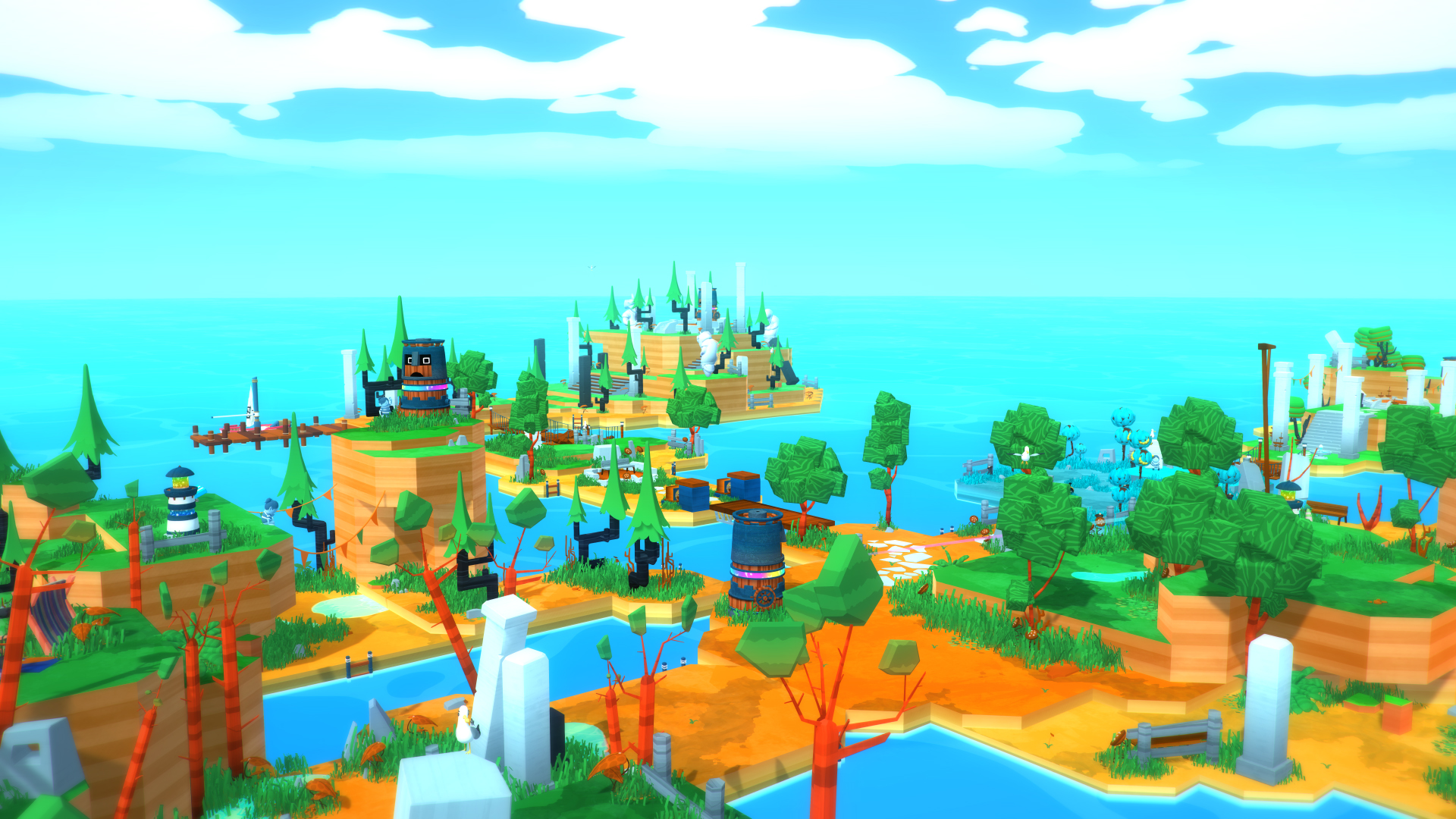
Sound
Tonally the sedate acoustic guitar scales and calming washes of treated strings fit right into the mix of the game. They add an extra layer of relaxing contemplation. There’s no standout piece but the whole soundtrack has a cohesive well made quality. It’s obvious that the score creators Carlos and Guillermo wanted the music to have an open and uncluttered arrangement. They have taken great care and restraint to let the fragile melodies drift over the player, enveloping them in a warm and tender sonic embrace.
Conclusion
Solo is an intriguing mixture of puzzle solving and self-psychoanalysis on love and relationships. Whether it works for someone is entirely dependent on the individual. I enjoyed it on a thought-piece experiment level. The charming and beautifully crafted gameworld allowed me to take my time and meditate within the environments. The design of the game actively encourages the player to ponder life’s complexities whilst taking in the views and vistas. This is a commendable approach to the normal gung-ho nature most games pursue. I’d thoroughly recommend Solo for like-minded players who seek an oasis of calm in these troubled times we currently live in.

